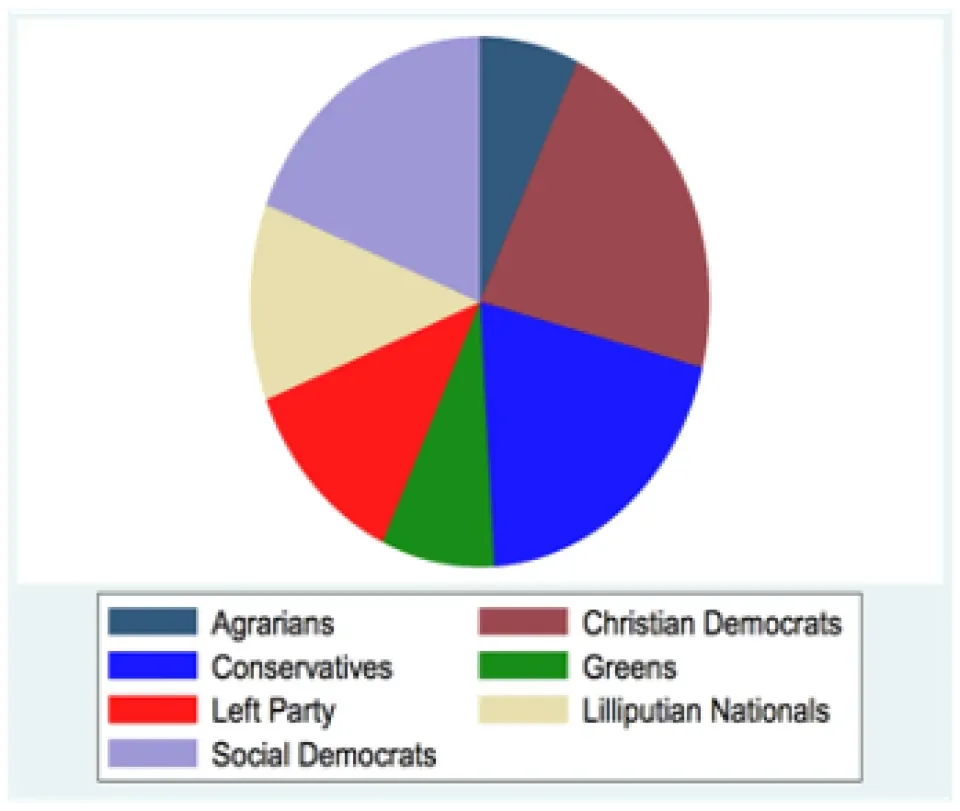
Overcoming Plagiarism using Written Simulations for Assessment
|
Lecturer: |
Professor Iain McMenamin |
|
Discipline: |
Social Science, Law & Government |
|
Subjects: |
Comparative Politics |
|
Level: |
Undergraduate & Postgraduate |
|
Class Size: |
All Class Sizes |
|
Mode of Delivery: |
Face-to-face, Blended & Online Formats |
Introduction
Simulations are used for written assessments in my comparative politics module. The traditional essays of social science are easy to plagiarise, given the wide amount of relevant online material for classic general questions. Simulations in the sense of role play are often used for teaching, but not so often for individual written assessment. Written simulations present students with a concrete problem or set of circumstances, to which they have to apply the theory and skills they have learned in the course. This promotes student engagement, active learning, and, so far, has never been plagiarised.
What was the learning and teaching challenge you faced?
Traditionally, social science assessment is dominated by essays. These tend to revolve around questions that are central to a substantial academic literature. This makes them very easy to plagiarise. Additionally, I wanted to probe whether students could apply concepts instead of just discussing them. Typically, in social science the application of concepts tends to be done in a research project, which is very demanding on the time of students.
What was done?/What did you do?
I designed short simulations, based on the theory and content covered in a previous class or classes. Students did the class simulation in a group, with one member briefly presenting their conclusions and a general discussion ensuing. The assessment then consisted of an individual written assignment in the exact same format, but with very different content. Here is an example:

Figure 1
Fiscal Laws Simulation
Balnibarbi has a history of persistent budget deficits and growing debt. Although the government has introduced a plan signalling major spending cuts and tax increases, there has been little change in the yield on Balnibarbian debt, as the markets do not believe the reforms will be implemented. Balnibarbian elections are held according to a party-list system. Voters opt for one list and the votes are divided amongst parties according to a highly proportional formula. Figure 1 outlines the composition of the Balnibarbian parliament.
The party system is stable and there have been very similar results over the last three decades. However, there have been periods of majority and minority coalition government. In Balnibarbian coalition governments, there is one minister per department who is responsible for spending in her area. The budget is negotiated by meetings of the whole cabinet and the finance minister’s main role is in tax policy, rather than expenditure control. The finance ministry also dominates economic forecasting in Balnibarbi. You are a consultant from an international organization. Please suggest and justify laws and institutions that would increase Balnibarbi’s credibility in the sovereign bond market. It is very easy to make simulations fun by introducing elements of whimsy, humour, and competition. Students always like this sort of thing. For example, the following fake tweet is part of a serious exercise, that is framed in an amusing way.

Tweet
“Which party family does this party belong to? Support your answer with reference to this tweet”
It is very important that the student have been given a relatively clear theory to guide them through the simulation. This also makes assessment more reliable and transparent. I have usually done this with relatively small classes (10-40) because I thought it was necessary to do a version of the simulation in class. However, this year I gave students in a class of 170 two written simulations and it worked very well. Of course, in this case, it is even more important that theory and concepts be clear.
How did it work for you?
It has been a great success, primarily in terms of student engagement and learning. Students always enjoy the class and written simulations. Learning to apply concepts is logically prior to critically evaluating them, as students are challenged to do in essays. It also offers an opportunity to spot if weaker students are fundamentally misunderstanding ideas before they do an essay.
Tips for implementing this practice
✔ Make it fun for your students
✔ Provide clear theory to guide students through the simulation
✔ Use simulation in conjunction with traditional essay modes of assessment.
Reflections and future plans?
I am hoping to introduce simulations into tutorials. Previously, only I have taught the simulations I have developed myself. I am also investigating their advantages and disadvantages for international education. Written assessed simulations do not burden non-native speakers with huge amounts of reading. In class, they give them an opportunity to develop their spoken English. However, they are very different to how they will have been assessed in their home institution. I think simulations have a great future in social science assessment, but cannot replace the traditional essay, which is, if done properly, a higher order exercise. Therefore, overall, simulations can help mitigate plagiarism, but cannot eliminate it.
The most time consuming part of this approach was the background research involved. After are review of the literature and researching which online linguistic tools would be suitable, it was a matter of carefully explaining the process and approach to the students so that they understood what, how and why we were doing something. The main components took place during class time and it was a very efficient mechanism of carrying out timely and useful feedback for students. It had not been possible in the past to provide this type of feedback due to the time constraints and the number of students involved. Implementing new assessment features can be challenging. Student buy-in is important and maintaining a respectful atmosphere is key component of the process. Ensuring that students work to the same timeframe can be a challenge as some students may rush through the process while others spend time on the details. Practical matters (e.g. ensuring that each student brings in a hard copy of their draft) may seem trivial but are important to ensuring that the process works as smoothly as possible. Future changes (e.g. using an online copy of the draft report) may be considered, but the logistical issues of anonymity will have to be carefully considered as this is a key element of the success of the process to date. Overall, if the lecturer has a good relationship with the students and they understand the motivation behind using them, they will work collaboratively with the lecture and it can result in benefits for all.

Copyright
You are free to share and/or adapt this material in any medium or format, but you must give appropriate credit, provide a link to the license, and indicate if changes were made. You may do so in any reasonable manner, but not in any way that suggests the licensor endorses you or your use. You may not use the material for commercial purposes.
